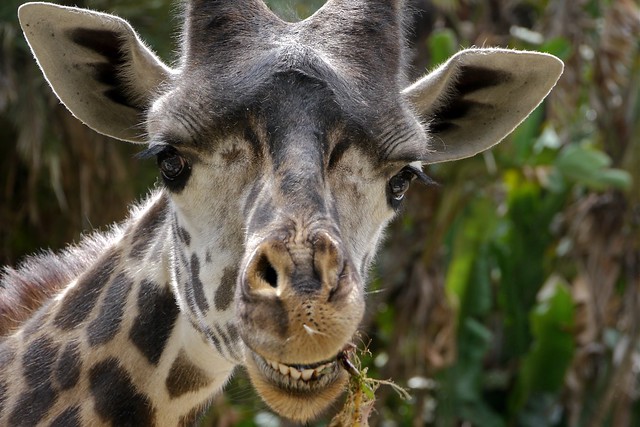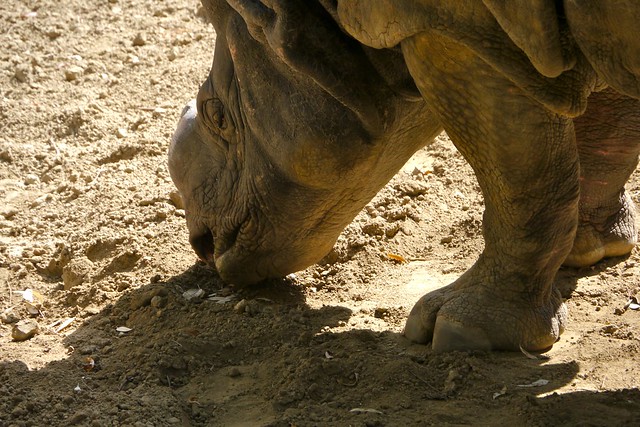Here are some relevant passages, including worst case scenarios and data on potassium iodide tablets:
"...Let me now talk about what would be a reasonable worst case scenario. If the Japanese fail to keep the reactors cool and fail to keep the pressure in the containment vessels at an appropriate level, you can get this, you know, the dramatic word “meltdown”. But what does that actually mean? What a meltdown involves is the basic reactor core melts, and as it melts, nuclear material will fall through to the floor of the container. There it will react with concrete and other materials … that is likely… remember this is the reasonable worst case, we don’t think anything worse is going to happen. In this reasonable worst case you get an explosion. You get some radioactive material going up to about 500 metres up into the air. Now, that’s really serious, but it’s serious again for the local area. It’s not serious for elsewhere even if you get a combination of that explosion it would only have nuclear material going in to the air up to about 500 metres. If you then couple that with the worst possible weather situation i.e. prevailing weather taking radioactive material in the direction of Greater Tokyo and you had maybe rainfall which would bring the radioactive material down do we have a problem? The answer is unequivocally no. Absolutely no issue. The problems are within 30 km of the reactor. And to give you a flavour for that, when Chernobyl had a massive fire at the graphite core, material was going up not just 500 metres but to 30,000 feet. It was lasting not for the odd hour or so but lasted months, and that was putting nuclear radioactive material up into the upper atmosphere for a very long period of time. But even in the case of Chernobyl, the exclusion zone that they had was about 30 kilometres. And in that exclusion zone, outside that, there is no evidence whatsoever to indicate people had problems from the radiation. The problems with Chernobyl were people were continuing to drink the water, continuing to eat vegetables and so on and that was where the problems came from. That’s not going to be the case here. So what I would really re-emphasise is that this is very problematic for the area and the immediate vicinity and one has to have concerns for the people working there. Beyond that 20 or 30 kilometres, it’s really not an issue for health.
...
[Q] Could you just explain why the worst case scenario here is much less than at Chernobyl?
[JB] Yeah, very much so. In Chernobyl, , first of all the top blew off the reactor and then the core of the reactor, the graphite which surrounds the core actually caught fire and burned for a very long time, so you had very, very, hot fire pushing all the material up in the normal sort of convection processes. Here, what will happen with the build up of pressure if the radioactive material interacted with the container floor and you would get a single explosion but it would not be a continued explosion. So that explosion would send material up to about 500 metres would be the sort of level we would expect. You know, it’s spurious accuracy, it might be 517 or 483 but that’s about it. And in terms of that, and couple that with weather, we still see absolutely no issue of material being taken at any critical level for human health beyond that 20 kilometres or so.
...
[Q] The next question, there’s a lot of concern in the community about the taking of iodine. At what point should iodine be taken and would you recommend people taking it proactively?
[Nick Kent, HPA Physician] Yes, I am. I think I’ll answer it in two ways. The ways you may get exposed to radio iodine are either you inhale volatile radio iodine and that will only happen very close to the nuclear power plant itself, and we certainly do recommend where people are close to a nuclear plant when an accident occurs that they should take stable iodine to block iodine uptake to the thyroid in those circumstances. But there’s nobody close to the nuclear plant and that’s not a means by which there will be exposure here, and therefore that’s not, you know that is not a reason to take iodine in the case of yourselves living in Tokyo. The second but most important way that people get exposed to radio iodine is that as the radio iodine settles into the environment, it gets incorporated into crops, it gets taken up into animals and it gets excreted into milk. And the problem in the case of Chernobyl which is where quite a number of cases of thyroid cancer were seen, it is now clear that the exposure pathway in the Russian Federation and Ukraine was ingestion of contaminated food, particularly milk. Now, we do not envisage the food chain as being an issue for you to take it up, and in any case, to use iodine to protect against the food chain would take long term administration of iodine, which would not be appropriate for other reasons, like the effects that would be on the thyroid. So I’ll just summarise. You’re not close to the plant so you’re not at an inhalation risk which is the principle use for iodine, and you we do not envisage you getting any radio iodine exposure through the food chain so again you know, no exposure therefore no need to use iodine as a countermeasure. Thank you."

The Ryōzen Kannon (霊山観音) in Kyoto: a war memorial dedicated to the Japanese and Allied soldiers who died in WWII.
May 17, 2008





